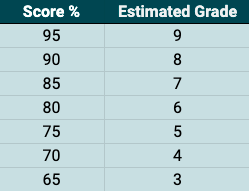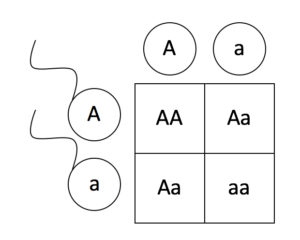Mock test. 1 hour and 10 minutes. 60 marks available.
Edexcel Combined Science Paper 1: Biology 1
Good Luck!
Quiz Summary
0 of 37 Questions completed
Questions:
Information
|
You must fill out this field. |
|
|
You must fill out this field. |
|
|
You must fill out this field. |
|
|
You must fill out this field. |
|
|
You must fill out this field. |
|
|
You must fill out this field. |
You have already completed this quiz. You cannot start it again.
Quiz is loading…
You must sign in or sign up to take this quiz.
You must first complete the following:
Results
Quiz complete. Results are being recorded.
Results
0 of 37 Questions answered correctly
Your Time:
Time has elapsed.
You have reached 0 of 0 point(s), (0)
Earned Point(s): 0 of 0, (0)
0 Essay(s) Pending (Possible Point(s): 0)
| Average Score |
|
| Your Score |
|
Categories
- Not categorized 0%
-

The above shows an estimate of your grade. Note: these grades are quite harsh and are under review. Taking part in this paper gives us more information to help us calibrate these grades.
- 1
- 2
- 3
- 4
- 5
- 6
- 7
- 8
- 9
- 10
- 11
- 12
- 13
- 14
- 15
- 16
- 17
- 18
- 19
- 20
- 21
- 22
- 23
- 24
- 25
- 26
- 27
- 28
- 29
- 30
- 31
- 32
- 33
- 34
- 35
- 36
- 37
- Current
- Review
- Answered
- Correct
- Incorrect
-
Question 1 of 37Question 11 Point
Electron microscopes have much higher resolution and magnification than light microscopes. What are the advantages of this?
CorrectIncorrect -
Question 2 of 37Question 21 Point
Place the measurement units in order from biggest to smallest
- Millimetres (mm)
- Picometres (pm)
- Micrometres (μm)
- Kilometres (km)
- Nanometres (nm)
- Metres (m)
View Answers:
CorrectIncorrect -
-
Question 3 of 37Question 33 Points
Drag and drop to match the role and structure
- Ribosomes
- Cell wall
- Vacuole
- Sites of protein synthesis (where proteins are made)
- Supports the cell providing strength and flexibility for growth
- Stores nutrients and salts
CorrectIncorrect -
Question 4 of 37Question 41 Point
Which sub-cellular structures can be found in animals?
CorrectIncorrect -
Question 5 of 37Question 51 Point
How many chromosomes does a single sperm cell have?
CorrectIncorrect -
Question 6 of 37Question 61 Point
Palisade cells are found just below the epidermis of leaves. What is their role and how are they adapted to perform it?
CorrectIncorrect -
Question 7 of 37Question 72 Points
Carbohydrates, quadrats, catalysts, chemicals, proteins
-
Complete the sentence: Enzymes are that act as biological .
CorrectIncorrect -
-
Question 8 of 37Question 84 Points
Drag and drop to match the term with the description
- Enzyme specificity
- Enzyme activity
- Active site
- Substrates
- Enzymes catalyse unique reactions
- Efficiency of catalysis
- Where substrate binds and reaction takes place
- Molecules that change in a reaction
CorrectIncorrect -
Question 9 of 37Question 91 Point
Why does the rate of an enzyme-controlled reaction plateau at a certain substrate concentration?
CorrectIncorrect -
Question 10 of 37Question 103 Points
Drag and drop to match the description to the process of transporting substances
- Osmosis
- Diffusion
- Active transport
- Movement of a fluid through a semipermeable membrane from low to high solute concentration
- Movement from high to low concentration
- Movement through a concentration gradient from low to high, requiring energy
CorrectIncorrect -
Question 11 of 37Question 111 Point
Chaotic, controlled, peaceful, uncontrolled
-
Cancer cells form when changes in cells lead to cell division
CorrectIncorrect -
-
Question 12 of 37Question 121 Point
Which of the following are outcomes of mitosis?
CorrectIncorrect -
Question 13 of 37Question 131 Point
Relay neurone, central nervous system, sensory neurone
-
Fill in the gap: Receptors detect a source of pain and send impulses via the sensory neurone towards the spinal cord. The intercepts the signal and diverts it along motor neurones to the effectors (muscles) which quickly move away from the source of pain.
CorrectIncorrect -
-
Question 14 of 37Question 141 Point
Motor neurones carry impulses to which part of the nervous system?
CorrectIncorrect -
Question 15 of 37Question 151 Point
What is the gap between neurones called?
CorrectIncorrect -
Question 16 of 37Question 161 Point
-
Base pairs of DNA are joined by weak bonds.
CorrectIncorrect -
-
Question 17 of 37Question 174 Points
-
A is a small section of DNA on a chromosome. Each codes for a particular sequence of , to make a specific .
Correct 4 / 4 PointsIncorrect / 4 Points -
-
Question 18 of 37Question 185 Points
Mitosis, meiosis, 2, 4, different, identical, haploid, diploid, gametes
-
During there are daughter cells produced. These are known as and they are genetically . The daughter cells are meaning they only contain half of the genes found in a typical human cell.
CorrectIncorrect -
-
Question 19 of 37Question 191 Point
Choose the correct statement about gametes
CorrectIncorrect -
Question 20 of 37Question 201 Point
During meiosis, how many daughter cells are produced?
-
daughter cells
CorrectIncorrect -
-
Question 21 of 37Question 211 Point
In the punnet square, a represents the allele for red hair. This allele is recessive. Use the punnet square to determine what percentage of offspring will have red hair.
 CorrectIncorrect
CorrectIncorrect -
Question 22 of 37Question 223 Points
Drag and drop to match the species to the fossil specimen
- Ardi
- Lucy
- The Leakey fossils
- Ardipithicus ramidus
- Australopithecus afarensis
- Homo habilis and Homo erectus
CorrectIncorrect -
Question 23 of 37Question 231 Point
Some of our evidence for human evolution is based on related species to humans from millions of years ago. Which of the following are characteristics of Ardi?
CorrectIncorrect -
Question 24 of 37Question 241 Point
Evidence for Darwin’s Theory of Evolution was found when resistance to what emerged in some species of bacteria?
CorrectIncorrect -
Question 25 of 37Question 253 Points
-
Complete the sentence: The World Health Organisation (WHO) defines health as a state of complete , and well being.
Correct 3 / 3 PointsIncorrect / 3 PointsUse some of the following words:
mental
environmental
immune
social
physical
-
-
Question 26 of 37Question 261 Point
All of the following are characteristics that humans would want to enhance in plants – Taste, yield, disease resistance, drought resistance and flavour. What is the common feature amongst these characteristics?
CorrectIncorrect -
Question 27 of 37Question 271 Point
Cirrhosis is a disease which is caused by excess consumption of alcohol over many years. Which organ does cirrhosis affect?
CorrectIncorrect -
Question 28 of 37Question 281 Point
Diseases that can be passed from person to person are called what?
CorrectIncorrect -
Question 29 of 37Question 291 Point
If coronary arteries are blocked, new blood vessels can be inserted, what is this procedure called?
CorrectIncorrect -
Question 30 of 37Question 304 Points
Drag and drop to match the method of reducing spread with the correct pathogen
- Treat water with chlorine or ozone
- Mosquito nets
- Burn infected trees/leaves
- Cough/sneeze into tissues
- Cholera
- Malaria
- Chalara ash dieback
- Tuberculosis
CorrectIncorrect -
Question 31 of 37Question 311 Point
Using a stent (a small mesh tube) is a method sometimes used to widen blood vessels in the heart. What are the potential negative consequences of this procedure?
CorrectIncorrect -
Question 32 of 37Question 321 Point
The binomial name for tigers is Felis tigris. Which part of the name represents the genus?
CorrectIncorrect -
Question 33 of 37Question 331 Point
What are the three domains?
CorrectIncorrect -
Question 34 of 37Question 341 Point
What is the binomial name for humans?
CorrectIncorrect -
Question 35 of 37Question 351 Point
Read the description and match it to the correct factor. Different characteristics as a result of mutation and sexual reproduction (inheritance).
CorrectIncorrect -
Question 36 of 37Question 362 Points
Environmental, interdependence, magnetic, genetic, rotationary
-
There are two sources of variation, these are and . Sometimes both of these factors can interact to cause variation.
CorrectIncorrect -
-
Question 37 of 37Question 371 Point
How are cells that line the small intestine specialised?
CorrectIncorrect
What does Edexcel Combined Science Paper 1: Biology 1 cover?
In this paper, a student’s knowledge and understanding of the fundamentals of biology are tested in order to gauge their preparedness for the GCSE. These fundamentals are essential for understanding the rest of biology as they underpin each topic. An understanding of cells, for instance, can help students to make sense of genetic modification and the role of bacterial cells as vectors for DNA implantation. Alongside paper 2, the aim is for students to develop a baseline in biology which will allow them to appreciate the natural world and if they so choose, move on to in-depth study at A-Level and beyond.
This paper also covers the basics of cells, growth and the Nervous System in section CB2. CB3 covers genetics which involved an understanding of meiosis, DNA, alleles inheritance, gene mutation and variation amongst populations. CB4 includes evolution by natural selection and also genetic modification. The evidence for human evolution is described, alongside the systems for classifying organisms and also the potential applications for selective breeding and genetic modification. The final section CB5 covers the concepts of health and disease in detail while considering the impacts of disease on different levels of society. Communicable and non-communicable diseases are introduced, along with pathogens and our bodies’ physical, chemical and immune defences. Antibiotics and other treatment options are also introduced.
If you are ready, why not move on to Edexcel Combined Science Paper 2: Biology 2?


